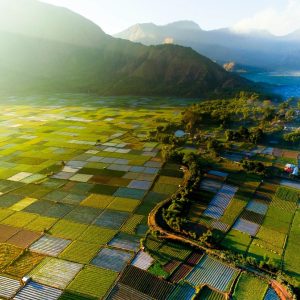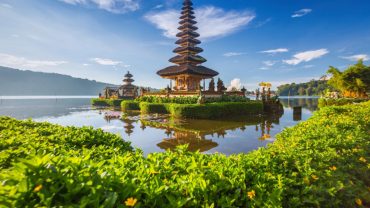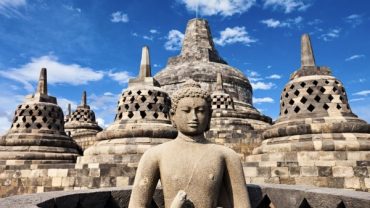Indonesia, an archipelago made up of over 17,000 islands, boasts a tropical climate that varies across regions, making it a year-round destination for travelers. However, understanding the country’s weather patterns can significantly enhance your travel experience. Here’s a breakdown of Indonesia’s weather and the best times to visit its diverse landscapes.
Indonesia’s Climate Overview
Indonesia enjoys a tropical climate, characterized by two main seasons: the wet season and the dry season. The weather can be hot and humid year-round, but temperatures usually stay between 25°C and 30°C (77°F and 86°F). Due to the country’s geographical diversity, the climate can vary significantly between regions.
• Wet Season (November to March): This period is marked by higher rainfall and occasional storms. The rain typically comes in heavy bursts but often doesn’t last all day. The wet season is ideal for those seeking lush landscapes, as the rain nurtures the vibrant green jungles and rice terraces.
• Dry Season (April to October): The dry season sees less rainfall, with sunny days and lower humidity. This is the peak tourist season, especially in destinations like Bali, Java, and Sumatra. It’s the best time for outdoor activities like trekking, diving, and sightseeing.
Regional Variations in Weather
Indonesia’s vast size means that weather patterns can differ greatly depending on the region you’re visiting. Here’s a quick look at the major islands and their weather conditions:
1. Weather in Bali and Lombok
Bali and Lombok, two of Indonesia’s most popular destinations, experience a typical tropical climate. The dry season (April to October) is ideal for visiting beaches, surfing, and exploring the islands’ temples and rice terraces. However, the wet season (November to March) still offers fewer crowds and vibrant green scenery, perfect for those who enjoy a quieter and more serene atmosphere.
2. Weather in Java
Java, home to Indonesia’s capital Jakarta and cultural hub Yogyakarta, experiences similar weather patterns to Bali, but with greater urbanization. The dry season is best for city exploration and visiting iconic sites like Borobudur Temple or the volcanic peaks like Mount Bromo. The wet season can bring sudden showers, especially in the west of the island.
3. Weather in Sumatra
Sumatra, Indonesia’s wild and untamed island, offers a more varied climate due to its large mountainous regions. The dry season (May to September) is the best time to visit the island’s rainforests, like those in Bukit Lawang, for wildlife experiences such as orangutan sightings. During the wet season, some areas become less accessible due to flooding.
4. Weather in Komodo, Flores, and Sumba
If you’re looking to see the famous Komodo dragons, the dry season (April to October) is the perfect time to visit Komodo Island. The region remains sunny, and the seas are calm for island-hopping. The wet season doesn’t affect Komodo as much as it does other parts of Indonesia, but it’s still advisable to travel during the dry months to get the most out of your visit.
5. Weather in Papua, Maluku, and Sulawesi
Papua, Maluku and Sulawesi, located in the eastern part of Indonesia, feature a tropical rainforest climate. The weather here is humid year-round with rain frequenting even during the dry months. While these regions are less crowded, visitors can still enjoy the rich biodiversity and vibrant marine life, though they may need to be prepared for unpredictable weather.
Best Time to Visit Indonesia
The ideal time to visit Indonesia depends on what you want to experience:
• For Beach Holidays and Outdoor Adventures: The dry season (April to October) is best for outdoor activities like surfing, snorkeling, trekking, and exploring the many islands.
• For Lush Greenery and a Quieter Experience: The wet season (November to March) offers fewer tourists, making it ideal for those who enjoy a more peaceful atmosphere. The rain also creates lush landscapes, perfect for nature lovers.
• For Wildlife Encounters: If you’re keen on visiting national parks and seeing wildlife, such as orangutans in Borneo or Sumatra, the dry season is optimal. Trekking in the rainforests is more challenging during the wet months.

Travel Tips for Indonesia’s Weather
• Pack Light and Layered Clothing: Lightweight, breathable fabrics are a must. If you’re traveling during the wet season, don’t forget a rain jacket or umbrella.
• Stay Hydrated: Indonesia’s tropical weather can be hot and humid, so drink plenty of water.
• Prepare for Sudden Weather Changes: Especially in mountain areas, the weather can change quickly. Be prepared for a sudden rain shower even in the dry season.
• Sun Protection: Even on cloudy days, the tropical sun can be strong. Use sunscreen, wear a hat, and seek shade during midday.
Now you know, that Indonesia’s weather can be a great factor in deciding the best time to visit. But regardless of when you go, you’ll be welcomed with rich culture, incredible nature, and warm hospitality. Whether you’re exploring bustling cities, relaxing on tropical beaches, or trekking through jungles, Indonesia is a year-round destination, offering something special no matter the season.




Comment (0)